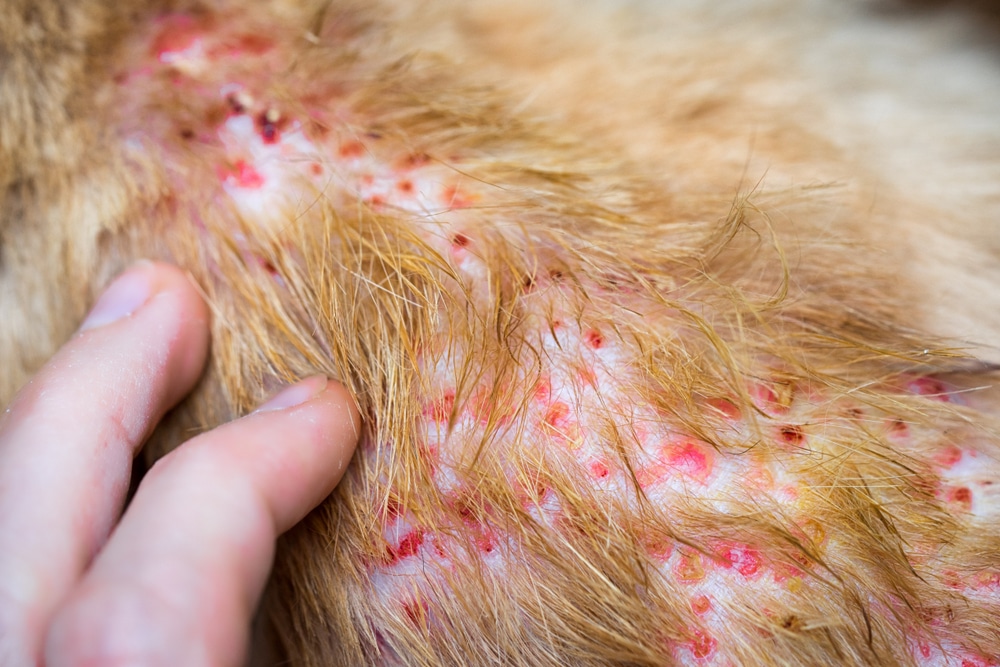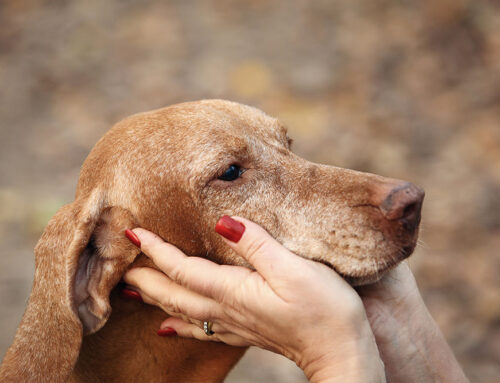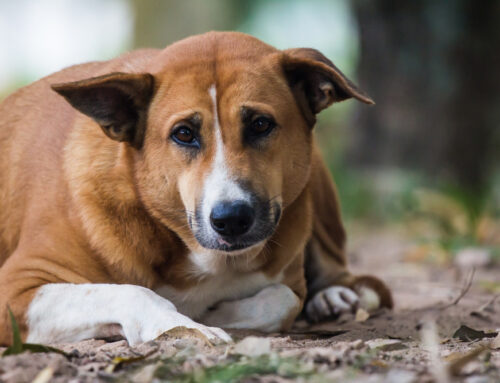Spring in Kentucky brings the beauty of blooming flowers, leafy trees, and fields showing off their bluegrass carpets. Unfortunately, the season also begins a yearly allergen cycle that can affect pets as well as people.
In this part of the state, spring tree allergens include poplar, birch, maple, cedar, oak, hickory, mulberry, and willow. In summer, bluegrass, ryegrass, bent, timothy, fescue, and orchard grasses commonly cause allergies. Fall brings allergies to weeds such as ragweed, wormwood, and sagebrush.
Environmental allergens aren’t the only dog and cat allergy triggers. Kentucky has a long flea season, March through December, and since fleas are pets’ leading allergy cause, you should visit our Central Kentucky Veterinary Center team to get your furry pal’s year-round preventive medication. Read our guide to learn about allergies your pet may experience.
Allergy types that affect dogs and cats
Various allergy types affect dogs and cats. The following allergy types can affect your pet:
- Flea allergy dermatitis (FAD) — If your furry friend shows allergy signs, FAD is the first condition for which our veterinarian will test your pet because FAD is pets’ most common allergic reaction. Your pet’s immune system can overreact to the saliva that fleas inject as they bite, leading to itching, fur loss, and inflamed skin.
Winning the war against fleas requires an all-out attack on several fronts. Our veterinary team treats any infection the fleas may have given your pet and prescribes an anti-itching product as well as a year-round preventive to minimize the possibility of additional FAD reactions. In addition, you need to banish the tiny parasites from your home and yard. Our team can recommend effective, pet-safe environmental flea control products. You’ll also need to wash all your pet’s bedding and anything else they like to lie on, such as area rugs or the comforter on your bed.
- Environmental allergens — Pollen is pets’ top environmental allergy. Although your pet may exhibit obvious signs in the spring, pollen can also affect your furry pal in summer and fall, too. Wiping your pet’s paws when they come inside can keep them from tracking pollen indoors, but doing so won’t prevent all pollen from getting into your house.
While outdoor environmental allergens are not typically active during the winter, you still need to be wary of indoor allergens such as mold spores, dust, and storage mites that can cause problems year-round. No amount of laundering, cleaning, and vacuuming can completely rid dust mites from your home.
- Food allergies — When food allergies occur, they can cause your pet a lot of discomfort. Proteins are more likely than carbohydrates to trigger allergies in pets. The top foods that cause allergies in dogs are beef, dairy products, and chicken. Soy, corn, egg, pork, fish, and rice are less common allergens to which some dogs are sensitive. The most common food allergens for cats are beef, fish, and chicken. Your pet can have an allergy to more than one food ingredient at a time.
A food trial or elimination diet trial is the best way to determine whether your pet has a food allergy. The food trial needs to last at least 8 to 12 weeks for pets with skin issues and three to four weeks for pets with digestive issues. Common food trial options include a novel ingredient diet, featuring ingredients your pet has never eaten before, and a hydrolyzed diet, in which dietary proteins are rendered too low for the body’s immune system to detect. Once you know the food to which your pet is allergic, you can eliminate it from their diet going forward.
Signs that may indicate your pet has an allergy

Dogs’ and cats’ allergies are typically most noticeable in their skin, ears, eyes, and anal glands. Pets’ allergy signs often include:
- Intense itching that causes excessive licking, scratching, chewing, biting, or rubbing
- Hair loss
- Red bumps
- Reddened, dark, or thickened skin patches
- Skin infections and rashes
- Skin sores and crusting
- Chronic ear infections
- Recurrent anal gland issues that cause pets to scoot along the floor
- Vomiting or chronic diarrhea
Cats may also have respiratory signs. These signs often include nasal discharge, conjunctivitis, and inflammation of the mucous membrane lining a cat’s three eyelids and eyeballs.
If your dog or cat is showing any of the allergy signs we’ve discussed here, schedule an appointment with our Central Kentucky Veterinary Center team. Your pet is in good hands with our American Animal Hospital Association (AAHA)-accredited team.







Leave A Comment